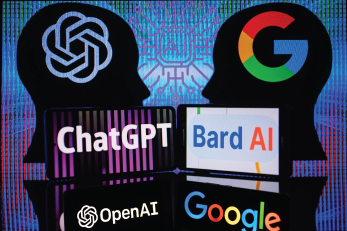In today’s fast-paced business landscape, the line between growing your business and going out of business is razor-thin. The key differentiator? Your ability to think and act strategically. However, for many business leaders, this is easier said than done. Buried under operational demands and time constraints, strategic decision-making often takes a back seat. Enter artificial intelligence (AI): a transformative technology that has the potential to revolutionize how businesses operate, make decisions, and grow. Yet, while you recognize AI’s immense potential, finding the time to understand and implement it can feel like an insurmountable challenge.
This post is your roadmap to overcoming these obstacles. We’ll explore how to escape operational overwhelm, harness AI for strategic clarity, and supercharge your decision-making processes to stay ahead of the competition. By the end, you’ll have actionable insights and practical tools to unlock the strategic advantage AI offers and achieve rapid results.
The Operational Trap: Why Leaders Struggle with Strategic Thinking
Business leaders face an ongoing challenge: balancing daily operations with long-term strategy. Fires to extinguish, deadlines to meet, and an endless stream of emails often leave little room for reflection or planning. This operational focus can create a dangerous cycle:
- Reactive Decision-Making: Leaders focus on short-term issues rather than long-term goals.
- Missed Opportunities: Strategic opportunities are overlooked because the urgent always outweighs the important.
- Stagnation: Without a clear strategic vision, businesses struggle to innovate or adapt to change.
This challenge is magnified by the rise of AI. While competitors are leveraging AI to outpace the market, many organizations find themselves too bogged down in operational tasks to explore its potential.
Why AI Is the Strategic Solution You Need
AI is more than a buzzword; it’s a game-changer that enables businesses to collapse the time it takes to turn data into decisions. Here’s how AI addresses the key pain points of modern leadership:
- Data Overload: AI can process vast amounts of data faster and more accurately than any human, providing actionable insights in real time.
- Time Constraints: Automating routine tasks with AI frees up leaders to focus on strategic priorities.
- Competitive Advantage: Companies that adopt AI gain insights, efficiency, and innovation, leaving slower adopters behind.
With AI, leaders can escape the operational weeds and reclaim the bandwidth needed for strategic thinking. The time to act is now.
Step 1: Escape Operational Overwhelm and Lead with Strategic Clarity
The first step in leveraging AI is to shift your mindset from reactive to proactive leadership. Here’s how:
Prioritize High-Impact Activities
Start by identifying the 20% of activities that drive 80% of your results. Delegate or automate the rest. Tools like AI-powered task managers (e.g., Asana’s AI Work Graph) can help identify inefficiencies and streamline workflows.
Automate Routine Processes
Freeing up time begins with automating repetitive tasks. For example:
- Customer Support: Use chatbots like ChatGPT or Zendesk AI to handle common inquiries.
- Scheduling: Tools like Clockwise or x.ai can automate meeting planning.
- Data Entry: Platforms like UiPath or Zapier streamline manual data tasks.
Build a Culture of Strategic Thinking
AI adoption isn’t just about technology; it’s about mindset. Encourage your team to think critically about how AI can enhance their roles. Provide training and resources to ensure they see AI as an enabler, not a threat.
Step 2: Collapse the Time It Takes to Turn Data into Decisions
One of AI’s greatest strengths is its ability to turn raw data into actionable insights. Here’s how to harness that power:
Use AI-Powered Analytics Tools
Platforms like Tableau, Power BI, and Google Cloud AI offer advanced analytics capabilities that simplify complex data. They provide dashboards and visualizations that make it easy to identify trends, opportunities, and risks.
Implement Predictive Analytics
Predictive analytics uses historical data to forecast future outcomes. This can be applied in areas such as:
- Sales Forecasting: Tools like Salesforce Einstein predict revenue trends.
- Inventory Management: AI solutions like ClearMetal optimize stock levels to reduce waste and improve cash flow.
- Customer Retention: Platforms like Amplitude use AI to predict and prevent churn.
Real-Time Decision-Making
AI can provide real-time insights to improve decision-making speed and accuracy. For example:
- Operational Monitoring: AI tools like Anodot detect anomalies and alert teams immediately.
- Customer Insights: Sentiment analysis tools (e.g., MonkeyLearn) analyze customer feedback in real time.
Step 3: Transform Your Decision-Making with AI for Strategic Advantage
AI doesn’t just accelerate decision-making; it enhances it. Here’s how to integrate AI into your strategic planning process:
Scenario Planning
AI can model multiple scenarios and predict outcomes, helping you make informed decisions under uncertainty. For example, tools like Causal or Alteryx allow you to simulate market changes and their impact on your business.
Enhanced Collaboration
AI-powered collaboration tools (e.g., Notion AI or Otter.ai) streamline team communication and knowledge sharing, ensuring everyone is aligned and informed.
Decision Augmentation
Rather than replacing human judgment, AI enhances it. For example:
- HR Decisions: Platforms like HireVue use AI to assess candidate fit.
- Pricing Strategies: Tools like Wiser optimize pricing based on market conditions and customer behavior.
Step 4: 10x the Impact of Every Employee
AI doesn’t just empower leaders; it empowers teams. By integrating AI into daily workflows, employees can achieve more with less effort:
Upskill Your Workforce
Equip your team with AI training to ensure they can maximize its potential. Online platforms like Coursera and LinkedIn Learning offer accessible courses on AI fundamentals.
Leverage AI Assistants
AI tools like Grammarly, Jasper, and Copilot help employees work smarter by automating writing, coding, and creative tasks.
Foster Innovation
Encourage your team to experiment with AI-driven solutions. Set up an AI innovation lab or task force to explore new applications.
Real-World Examples of AI Success
Example 1: Retail Giant Transforms Customer Experience
A leading retailer implemented AI-driven chatbots to handle 70% of customer inquiries. This reduced response times by 50% and allowed support staff to focus on complex cases, improving overall customer satisfaction.
Example 2: Manufacturing Company Optimizes Operations
A global manufacturer used predictive analytics to reduce equipment downtime by 30%. AI sensors identified potential failures before they occurred, saving millions in repair costs.
Example 3: Financial Services Firm Enhances Decision-Making
A financial services company adopted AI for portfolio management, enabling real-time risk analysis. This led to a 20% increase in client returns.
Immediate Steps to Get Started
To see rapid results, begin with these actionable steps:
- Audit Your Current Processes: Identify areas where AI can have the most impact.
- Start Small: Pilot AI solutions in one department before scaling.
- Choose the Right Tools: Research AI platforms that align with your goals.
- Measure Impact: Track performance metrics to ensure ROI.
- Iterate and Scale: Use lessons learned to expand AI adoption across your organization.
Conclusion: Embrace AI Now for a Strategic Edge
The rise of AI presents an unprecedented opportunity for businesses to escape operational overwhelm, think strategically, and drive growth. By integrating AI into your decision-making processes, you can collapse the time it takes to turn data into decisions, empower your team, and gain a competitive edge.
The time to act is now. Begin your AI journey today, and watch your business transform from reactive to proactive, from operational to strategic, and from surviving to thriving.


